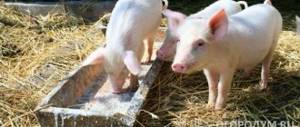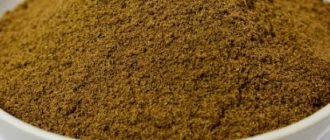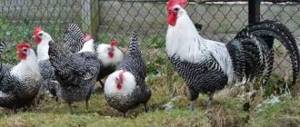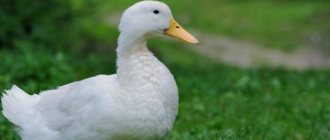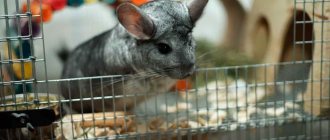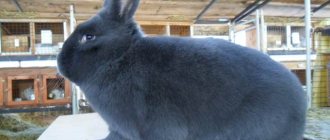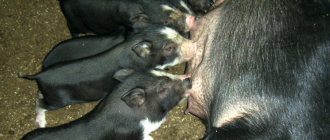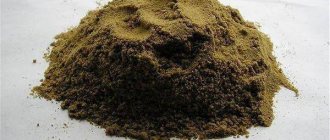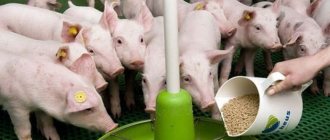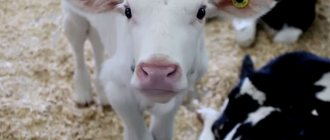In agriculture, a variety of organic fertilizers are widely used to enrich food supplements for animals and fertilize soil for plants. Bone meal is considered a universal, long-acting drug that has a unique composition.
What is bone meal?
Organics are irreplaceable substances that are necessary to create ideal conditions in the garden. Experienced specialists know that there is no universal remedy that would suit all cultures. Bone meal is an excellent alternative to well-known fertilizers, such as manure and droppings. The environmentally friendly composition, natural ingredients and complete decomposition within up to 8 months make the use of this organic additive very widespread. There are different types of flour available for sale, and understanding them is important in order to select the best variety for a specific task.
What does bone meal look like?
Different types of bone meal differ in their composition and appearance. At its core, bone meal is ground animal or fish bones. It is easy to distinguish organic fertilizer from other types: it looks like a brown powder, consisting of small particles no larger than 12 mm in size. Large clots should be absent in high-quality flour. The yellow color of the flour indicates unacceptable additives in the product. Fertilizers that contain soybean have a greenish tint. The smell should not be musty or unpleasant.
Composition of bone meal
Another name for the organic additive in question is phosphonitrogen, from which it is clear what bone meal is, it contains a whole complex of substances useful for plants and animals. The composition of the product is regulated by a special standard, which determines the amount of substances depending on the type of fertilizer. Protein is the main component of the product; first class bone meal contains the most protein. Fats and ash are contained in large quantities in flour of the second and third classes. Useful substances contained in the fertilizer:
- calcium;
- phosphorus;
- sodium choline;
- copper;
- iron;
- iodine;
- acids: glutamic, bile, nicotinic, adenosine triphosphoric (ATP);
- B vitamins;
- thyroxine;
- riboflavin;
- carnitine;
- manganese;
- nitrogen.
What is bone meal made from?
Many people believe that bone meal contains only the ground solid remains of the skeletons of animals and birds, but this opinion is erroneous. Organic components are an important component of this fertilizer. Depending on the composition, flour is divided into several types:
- Bone
meal is a meal containing finely ground cattle bones. - Fish bone meal
is a fertilizer and food supplement for pets that is made from fish bones and waste. - Shell meal
is widely used in coastal areas where there are many crustaceans. Parts of shrimp, crayfish, crabs and other sea animals are used to make it. - Horn-hoof meal
is an additive for the production of which the hooves and horns of large domestic animals are used; this type of fertilizer is characterized by a high nitrogen content.
What kind of biological product is this?
Bone meal is ground up bones from pets, poultry, or fish. You can get it in two ways: either the bones are burned, or boiled, and then ground into powder. With dry processing, loss of protein and fat is eliminated, and the output volume of the finished product increases. The raw materials are properly sterilized, which eliminates the presence of pathogenic bacteria in the finished flour.
The power of this supplement lies in the active components, where in addition to copper, iron, manganese, iodine, cobalt, lysine, cystine, methionine and almost 50% protein are also present. Well, the most basic ones:
- nitrogen (unprocessed flour contains 5%, heat-treated flour - 1%),
- calcium (up to 12%),
- phosphorus (up to 35%).
Due to the high phosphorus content, it is called phosphorus feeding. And in gardening stores they sell it under the name phosphonitrogen.
Attention! If phosphorus is added to the soil in its natural form, it will not be washed out for a long time. And this will ensure good nutrition of the roots and effective growing season.
Fish bone meal has exactly the same composition of microelements, only the nitrogen content in it is higher and reaches 10%. It is obtained by drying and crushing fish waste, from the remains of crustaceans and seafood. Different types of fertilizers will differ from each other in quality, concentration and color. This depends on the characteristics of production and raw materials.
Blood meal also belongs to this group of fertilizers. It is a by-product of animal disposal. During slaughter, the blood is collected in special containers, the moisture is completely removed, and then the semi-finished product is dried and after a certain time the finished product is obtained. Phosphorus is not present in this composition, but the soil is quickly saturated with nitrogen.
Attention! Blood meal has an unpleasant odor, so it is not recommended for use on indoor flowers.
Pros and cons of bone meal
Like any fertilizer, bone meal has its advantages and disadvantages, which you need to be aware of when using it. The main disadvantage of the drug is the need to match the pH level of the soil - if this indicator is below 7, then the beneficial substances will not be able to be absorbed by plants. Bone meal is a fertilizer, the dosage of which must be observed - exceeding it threatens the development of chlorosis and yellowing of the leaves. Pets, dogs and cats, can become poisoned if they find and overeat flour. The main advantages of the fertilizer are considered to be the following features:
- A unique composition that provides plants with all the substances necessary for development.
- Environmental friendliness - natural components in bone meal decompose without residue.
- Acceptable price.
- Can be used both in dry form and for preparing aqueous mixtures.
Bulbous flowers
When planting tulips, daffodils and lilies in your summer cottage, you should pay attention to organic phosphorus fertilizer (bone meal). The substance is poured directly into the prepared funnel. The dose is 1:1 relative to the soil. It is thoroughly mixed with bone meal, slightly compacted, and then the crop is planted. In spring, the flowerbed will sparkle with a variety of bright flowers.
Acidic soil will require plenty of bone meal to provide phosphorus and calcium.
What is bone meal used for?
To fertilize plants in the garden and on the plot, bone meal can be used during any growing season. The slow action ensures a long-term supply of nutrients to plants. Fertilizing with bone meal has a beneficial effect on all types of crops; the most important properties of the fertilizer are considered to be:
- Versatility - bone meal is approved for feeding all types of plants.
- Increasing the immunity of plants, which become less susceptible to diseases and pests.
- Acceleration of ovary.
Houseplants
By arranging a “winter” garden on the windowsill, flora fans put their soul into it. They regularly water and spray the flowers. If necessary, replant and organize organic feeding. Bone meal is considered a universal remedy for any indoor crop.
The substance is applied in both dry and liquid form. The dose is calculated based on the weight of the soil that fits in the pot. For 1 kg of soil, 1 g of phosphorus powder is sufficient. Liquid fertilizer is prepared at the rate of adding 1 g of substance to 1 liter of clean water. As a result, flowering plants produce more buds and others develop lush greenery.
How to make bone meal?
In any agricultural stores and specialized retail outlets you can purchase ready-made fertilizer made from bones and organic additives. There are simple instructions on how to make bone meal at home:
- To prepare an organic supplement, you will need bones - chicken, fish or parts of large livestock breeds (pork, veal).
- The material must be cleaned of fatty deposits and rinsed well.
- The bones should be placed on a baking sheet and placed in the oven for 2-3 hours, setting the temperature to at least 200°C.
- When the bones become loose, they can be removed and left to cool.
- Using a hammer or mortar, the softened pieces should be crushed into dust. Organic bone meal is ready, it must be poured into a well-closed container and used according to the instructions.
How to use bone meal?
Soil amendments containing nitrogen and phosphorus differ in composition, and the use of different types of fertilizer is recommended for different purposes. In terms of their properties, all types of organic flour are in second place after superphosphates. Everyone needs to study the instructions before using this type of fertilizer and become familiar with all its pros and cons. The use of bone meal for enriching the soil, feeding garden crops, or as a food additive for pets differs in different ways, each of which should be described in more detail.
Bone meal for animals
Most experts in the field of zoology strongly recommend the use of organic matter as a food additive when feeding animals. Professional dog handlers advise adding bone meal for dogs no more than 2 times a day to food at the rate of 1 teaspoon per 10 kg of animal weight. Enriching food with organic biologically active additives at a pet’s early age has a positive effect on the entire body and contributes to:
- acceleration of growth;
- stable optimal weight gain;
- improving appetite;
- strengthening joints, bones and ligaments.
Bone meal for chickens
Bone meal is a common food additive in the diet of chickens. It is recommended to use it as an additive to ready-made commercial feed or to dilute a homemade mash. When understanding the question of how to give bone meal to broilers, you need to understand which type of fertilizer is more suitable for a particular breed of bird.
- Meat and bone meal has a beneficial effect on laying hens if each bird receives no more than 10 g of the additive per day. The dosage for 5 kg of finished feed is 250 g.
- Bone meal is used in smaller volumes; 35 g of product should be added to 5 kg of feed.
Bone meal for plants
The use of nitrogen-phosphorus additives has a beneficial effect on plant growth, and bone meal fertilizer is widely used in agriculture. Everyone needs to remember how to use this powder.
- With the dry method of fertilization, before planting the plants, bone meal should be scattered on the ground in a thin layer and the soil should be dug up. It is recommended to water the soil so that the additive is well dissolved.
- Preparation of an aqueous solution for watering seedlings and seedlings is prepared at the rate of 1 kg of bone meal per 1 bucket of boiling water. The solution must be infused for 1-2 days, filtered, diluted with water in a ratio of 1:10 and added to the root of each plant no more than once a month.
- The easiest way is to add 1 tbsp. spoons of fertilizer into each hole when planting or loosening the soil.
Powder under a microscope, benefits for plants and advantages
The substance is obtained from solid waste of cows, bulls and fish, which contain an abundance of calcium and phosphorus.
Regardless of the production method, bulk fertilizer contains from 15 to 33% of these valuable components. In addition, the product contains:
- iron;
- magnesium;
- potassium;
- copper;
- zinc;
- cobalt;
- manganese;
- iodine.
The main advantage of organic matter is complete safety. When using bone meal in gardening and gardening, gardeners wear only gloves. Its subtle, specific smell does not emit harmful fumes and does not cause allergies. The fertilizer decomposes over 8 months. One procedure is enough for the season, thanks to which the plants receive minerals in full. In addition, there is never too much substance. The leaves do not get burned, and the root system does not rot. Why do you need bone meal in the garden?
Agronomists highlight several points:
- stimulates root formation;
- increases immunity;
- protects against pests;
- prepares perennials, berry bushes, fruit trees for wintering;
- affects the abundant formation of buds;
- has a beneficial effect on the taste of fruits and the speed of ripening.
Although organic fertilizer is a concentrated substance, it is not necessary to dilute it with water; look for a suitable storage room. The powder is used at any time of the year, regardless of the growing season of plants. If necessary, apply before harvest.
How to store bone meal?
Biological organic additives contain protein components and fats, and therefore tend to deteriorate. The shelf life of bone meal is one year from the date of manufacture, the exact dates are indicated by the manufacturer on the packaging. You can increase the shelf life of a healthy additive and avoid the breakdown of elements contained in flour into toxic poisons if you follow simple rules:
- Powdered bone meal should be stored in a dry and cool place at a temperature not exceeding +25°C.
- The room must be regularly ventilated and ventilated.
- The moisture content of bone meal must be maintained at a constant level of 9-10%.
